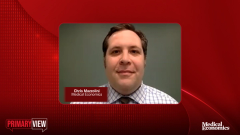
Establishing Goals of Therapy for Weight Loss
Dr Elena A. Christofides highlights various treatment goals for managing patients who are diagnosed as overweight or obese.
Episodes in this series

Chris Mazzolini: Let’s move on to the therapeutic goals of treating obesity. Dr Christofides, what are the goals of treating overweight and obesity in patients?
Elena A. Christofides, MD, FACE: To follow up on what Dr Harold Edward Bays was saying, the goals of treating overweight or obesity is to prevent or reduce the disease inflammation of the dysfunction that’s being caused systemically in the body by the excess fat mass, or dysfunctional fat. There may be people who are overweight or have obesity who don’t have dysfunctional fat. They don’t have that inflammation. They don’t have that level of obesity or overweight that rises to the occasion of being diseased. It’s imperative, from the clinician’s perspective, to identify individuals who are at risk of those components: the biomechanical, the metabolic issues, mental health, dementia, vascular disease. Identifying those individuals, when they’re in the early stages of those manifestations or already have those diseases in play is crucial.
As for treatment and goals, the intention is to reduce inflammation by reducing the inflammatory fat mass and reducing the strain on the system due to the volume of fat mass with biomechanical issues— such as reducing the body weight of an individual who’s about to undergo knee replacement surgery, which was caused by the mechanical aspects of carrying around more weight than the patient should, or the reduction of diabetes, blood pressure, cholesterol, brain inflammation, clotting risk, heart disease, kidney disease, or whatever it may be. It may be reducing those disease elements, because they contribute to morbidity and mortality of the patient, by reducing the fat mass and the inflammation associated with the fat mass. The goals of treatment are to reverse the mechanical and biochemical features of unhealthy fat. Whether the patient is overweight or obese is irrelevant. It doesn’t matter. Having a patient who has excess adiposity, which needs to be reduced, and maintaining that medical benefit long term is the ultimate goal of therapy. It’s not enough to just reduce the adiposity 1 time because we know that weight regain is a problem. Reducing weight and maintaining are 2 completely separate and relevant goals.
Transcript edited for clarity.
Newsletter
Stay informed and empowered with Medical Economics enewsletter, delivering expert insights, financial strategies, practice management tips and technology trends — tailored for today’s physicians.







